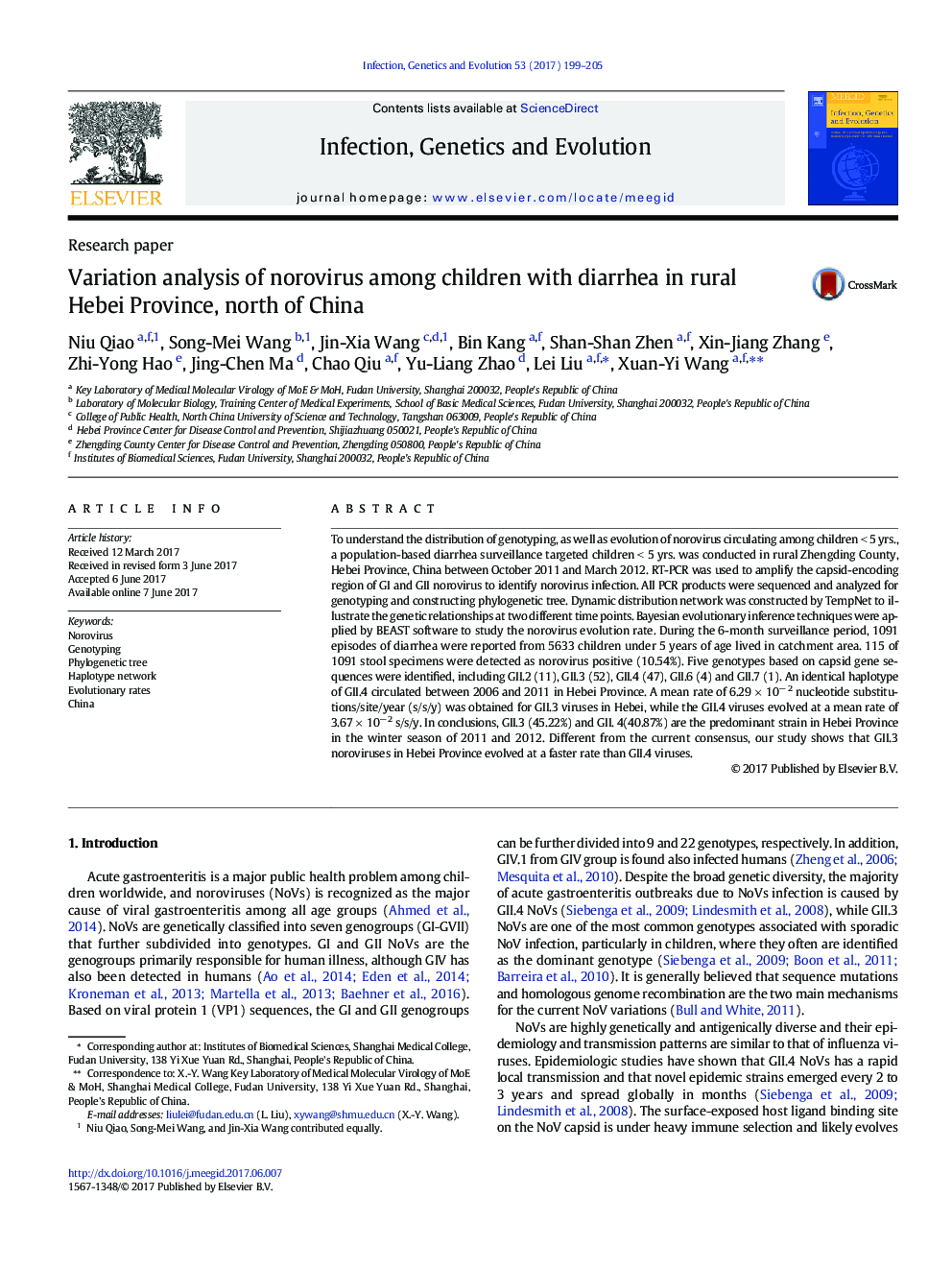| کد مقاله | کد نشریه | سال انتشار | مقاله انگلیسی | نسخه تمام متن |
|---|---|---|---|---|
| 5590672 | 1570150 | 2017 | 7 صفحه PDF | دانلود رایگان |
- This evolution study was based on a population-based diarrhea surveillance targeted children <Â 5Â yrs
- A mean rate of 6.29 Ã 10-2 s/s/y was obtained for GII.3 viruses in Hebei, while 3.67 Ã 10â 2 s/s/y for the GII.4 viruses.
- Our study shows that GII.3 noroviruses in Hebei Province evolved at a faster rate than GII.4 viruses.
To understand the distribution of genotyping, as well as evolution of norovirus circulating among children < 5 yrs., a population-based diarrhea surveillance targeted children < 5 yrs. was conducted in rural Zhengding County, Hebei Province, China between October 2011 and March 2012. RT-PCR was used to amplify the capsid-encoding region of GI and GII norovirus to identify norovirus infection. All PCR products were sequenced and analyzed for genotyping and constructing phylogenetic tree. Dynamic distribution network was constructed by TempNet to illustrate the genetic relationships at two different time points. Bayesian evolutionary inference techniques were applied by BEAST software to study the norovirus evolution rate. During the 6-month surveillance period, 1091 episodes of diarrhea were reported from 5633 children under 5 years of age lived in catchment area. 115 of 1091 stool specimens were detected as norovirus positive (10.54%). Five genotypes based on capsid gene sequences were identified, including GII.2 (11), GII.3 (52), GII.4 (47), GII.6 (4) and GII.7 (1). An identical haplotype of GII.4 circulated between 2006 and 2011 in Hebei Province. A mean rate of 6.29 Ã 10â 2 nucleotide substitutions/site/year (s/s/y) was obtained for GII.3 viruses in Hebei, while the GII.4 viruses evolved at a mean rate of 3.67 Ã 10â 2 s/s/y. In conclusions, GII.3 (45.22%) and GII. 4(40.87%) are the predominant strain in Hebei Province in the winter season of 2011 and 2012. Different from the current consensus, our study shows that GII.3 noroviruses in Hebei Province evolved at a faster rate than GII.4 viruses.
Journal: Infection, Genetics and Evolution - Volume 53, September 2017, Pages 199-205
